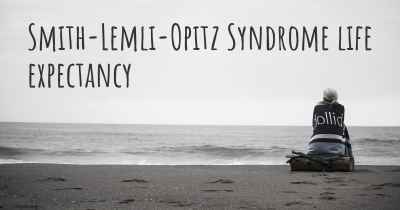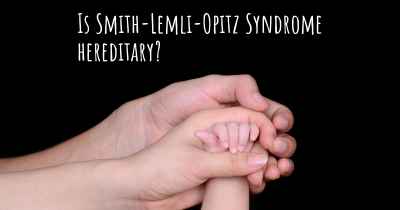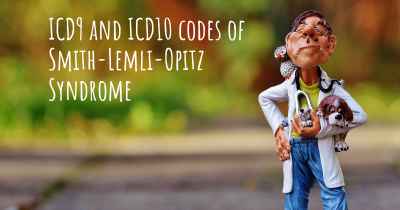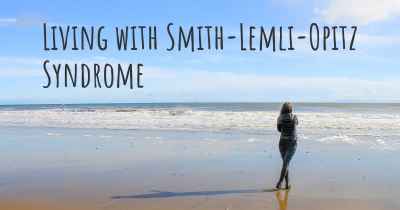Is it advisable to do exercise when affected by Smith-Lemli-Opitz Syndrome? Which activities would you suggest and how intense should they be?
See if it is advisable for people with Smith-Lemli-Opitz Syndrome to practice sports and which ones are the most recommended if you have Smith-Lemli-Opitz Syndrome
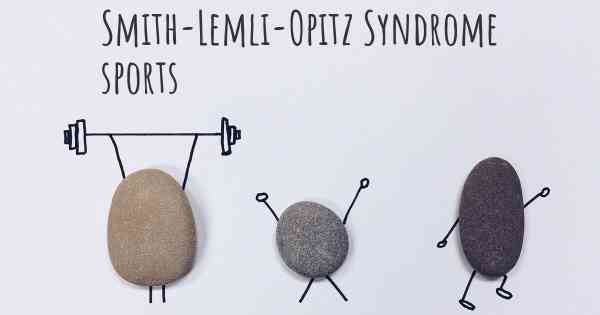
Smith-Lemli-Opitz Syndrome (SLOS) is a rare genetic disorder that affects the body's ability to produce cholesterol. This condition can lead to a wide range of physical and developmental challenges. When it comes to exercise, it is important to approach it with caution and consult with a healthcare professional who is familiar with the individual's specific case.
While exercise can have numerous benefits for overall health and well-being, individuals with SLOS may have unique considerations due to their condition. The severity of symptoms can vary greatly from person to person, so it is crucial to tailor exercise recommendations to the individual's abilities and limitations.
Low-impact activities are generally recommended for individuals with SLOS, as they minimize the risk of injury and strain on the body. These activities can include:
- Walking: Walking is a great low-impact exercise that can be easily modified to suit the individual's abilities. It can be done indoors on a treadmill or outdoors in a safe and controlled environment.
- Swimming: Swimming is a highly recommended activity for individuals with SLOS. It provides a full-body workout while minimizing stress on the joints.
- Cycling: Cycling, whether on a stationary bike or outdoors, can be a beneficial exercise option. It allows for cardiovascular conditioning without putting excessive strain on the body.
- Yoga: Yoga can help improve flexibility, balance, and strength. It can be modified to accommodate different abilities and can be practiced at home or in a class setting.
Intensity is an important factor to consider when exercising with SLOS. It is generally recommended to start with low to moderate intensity activities and gradually increase as tolerated. The individual's energy levels, physical abilities, and any associated medical conditions should be taken into account when determining the appropriate intensity.
It is important to note that individuals with SLOS may have low muscle tone (hypotonia) and reduced stamina, which can affect their ability to engage in prolonged or high-intensity exercise. Therefore, it is crucial to listen to the body and avoid pushing beyond its limits.
Benefits of exercise
Regular exercise, when done appropriately, can offer several benefits for individuals with SLOS:
- Improved cardiovascular health: Engaging in aerobic activities can help strengthen the heart and improve overall cardiovascular fitness.
- Enhanced muscle strength and tone: Low-impact exercises can help improve muscle strength and tone, which can be particularly beneficial for individuals with hypotonia.
- Increased flexibility and range of motion: Activities like yoga can help improve flexibility and joint mobility.
- Improved mood and mental well-being: Exercise has been shown to release endorphins, which can help boost mood and reduce symptoms of anxiety and depression.
- Weight management: Regular physical activity can help maintain a healthy weight and prevent obesity, which is important for overall health.
Precautions and considerations
While exercise can be beneficial, it is important to keep the following precautions and considerations in mind:
- Consultation with healthcare professionals: Before starting any exercise program, it is crucial to consult with healthcare professionals who are familiar with the individual's specific case of SLOS. They can provide personalized recommendations and guidance.
- Monitoring for signs of fatigue or distress: Individuals with SLOS may have reduced stamina and energy levels. It is important to monitor for signs of fatigue, distress, or any adverse reactions during and after exercise. If any concerning symptoms arise, it is essential to stop the activity and seek medical attention if necessary.
- Modifications and adaptations: Exercise routines should be tailored to the individual's abilities and limitations. Modifications may be necessary to accommodate any physical or developmental challenges associated with SLOS.
- Hydration and temperature regulation: Individuals with SLOS may have difficulty regulating body temperature. It is important to exercise in a comfortable environment and stay adequately hydrated.
- Supervision: Depending on the individual's age, abilities, and associated medical conditions, supervision during exercise may be necessary to ensure safety and proper form.
Conclusion
Exercise can be beneficial for individuals with Smith-Lemli-Opitz Syndrome, but it is crucial to approach it with caution and tailor it to the individual's abilities and limitations. Low-impact activities such as walking, swimming, cycling, and yoga are generally recommended. The intensity should be low to moderate, taking into account the individual's energy levels and physical abilities. Consulting with healthcare professionals and monitoring for any adverse reactions or signs of distress is essential. With proper guidance and precautions, exercise can contribute to improved cardiovascular health, muscle strength, flexibility, mood, and overall well-being for individuals with SLOS.
Sports are highly recommended are swimming and yoga by their variability in the intensity, the permissiveness of the time to physically operate the body, the relaxation associated associated with its practice and benefits both psychological and physical that provide.
Posted Nov 23, 2017 by Ruth 750
